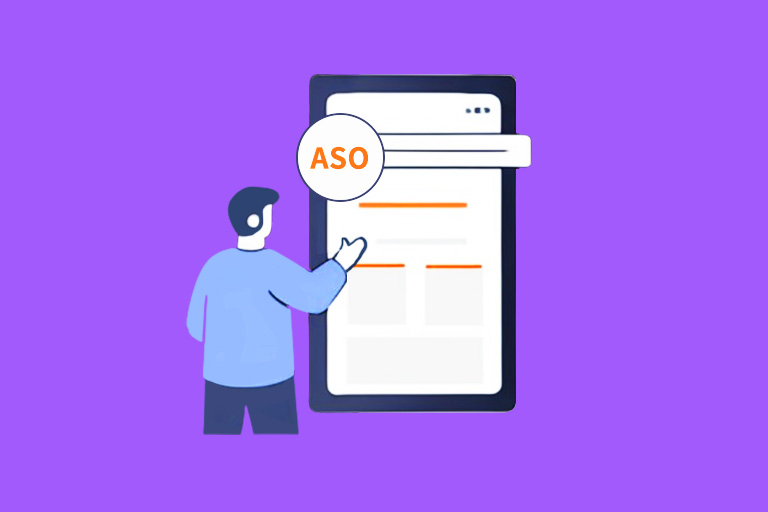Understanding and leveraging search traffic data is the key to executing a performance-driven strategy. The acquisition and analysis of this data provide app marketers with the insight needed to optimize their product's visibility and user acquisition efforts.
This article will explore the multifaceted approach to gathering and analyzing search traffic data, which is paramount for any app's success.
Acquiring Search Traffic Data
App Store Built-in Analytics Tools
App stores like Apple's App Store and Google Play offer built-in analytics that provide basic data on search terms leading users to your app. These platforms give insights into keyword performance, user demographics, and download figures, serving as a starting point for understanding search traffic.
Third-Party ASO and Analytics Tools
For a more comprehensive analysis, the third-party tool such as
FoxData, can
track keyword rankings,
competitor performance, and more nuanced user behavior patterns.
In-App Analytics Tools
Tools like Google Analytics for Mobile and Mixpanel can be integrated into apps to gather detailed data on user interactions. They track how users discover the app, their actions within the app, and what prompts them to convert or churn.
You can also use
FoxData's User Activity Monitoring Tool and
FoxData's User Retention Analysis Tool to get similar features.
Search Engine Data
Search engines are treasure troves of data. Tools like Google Search Console can help app marketers understand how web search traffic translates to app interest, providing a broader view of online search behaviors related to the app.
Social Media and Online Forums
Social listening tools can monitor mentions and discussions about the app or related topics across social media platforms and online forums. This qualitative data can reveal public perception and the context in which users search for related apps.
User Feedback and Surveys
Direct feedback from users through surveys, reviews, and interviews can uncover the terms and phrases users associate with the app. This first-hand information is invaluable for aligning the app's keyword strategy with the user's language. You can also use
FoxData's Review Management Tool to gauge user feedback for your apps.
Analyzing Search Traffic Data
Once the search traffic data is collected from various sources, the next crucial step is to analyze it to extract meaningful insights that can drive strategic decisions. Here's a breakdown of how to approach the analysis of search traffic data:
Identifying Trends and Patterns
The first step in analyzing search traffic data is to look for trends and patterns. This includes understanding which keywords are most popular over time, identifying seasonal trends, or recognizing shifts in user behavior. For instance, an app marketer might notice an increase in searches for "fitness tracking" after New Year's, suggesting an opportunity to capitalize on New Year's resolutions.
Understanding User Intent
Analyzing the intent behind search queries is essential. Search terms can be categorized as informational, navigational, or transactional. Informational searches might indicate a user is looking for information ("What is the best meditation app?"), while transactional searches show a readiness to take action ("Download calorie counter app"). By understanding intent, marketers can tailor their app's listing to match what users are seeking.
Segmenting User Data
Segmentation involves breaking down data into specific groups based on demographics, behavior, or other criteria. This allows for more targeted analysis. For example, if data shows that users in a certain age group are searching for "budgeting apps for young adults," marketers can focus on optimizing for these terms within that demographic segment.
Conversion Rate Correlation
A key aspect of analysis is determining which keywords and search terms are not just driving traffic but also leading to conversions. Conversion rate analysis helps prioritize keywords that are most valuable to the business. If "language learning for beginners" has a higher conversion rate than "language learning app," the former may be a better focus for optimization efforts.
Competitive Analysis
Search traffic data can also provide insights into how an app is performing relative to its competitors. By analyzing the keywords that competitors rank for and the volume of traffic they receive, marketers can identify opportunities to differentiate their app and target gaps in the market.
Sentiment Analysis
Beyond quantitative data, qualitative analysis, such as sentiment analysis, can be conducted on user feedback and social media mentions. This can reveal how users feel about the app and what features or benefits they value most, which can inform both product development and marketing messaging.
Actionable Insights for Optimization
The culmination of this analysis is to derive actionable insights that can be applied to improve the app's marketing strategy. This might involve updating the app's metadata with high-converting keywords, creating targeted ad campaigns, or adjusting the app's features to better meet user needs.
Conclusion
The meticulous process of acquiring and analyzing search traffic data is an importnat part of a successful app marketing. It enables marketers to make data-driven decisions that can significantly enhance the app's discoverability and appeal to potential users. By tapping into the wealth of information available through various analytics tools and platforms like
FoxData, marketers can craft a tailored, effective strategy that resonates with their target audience.







